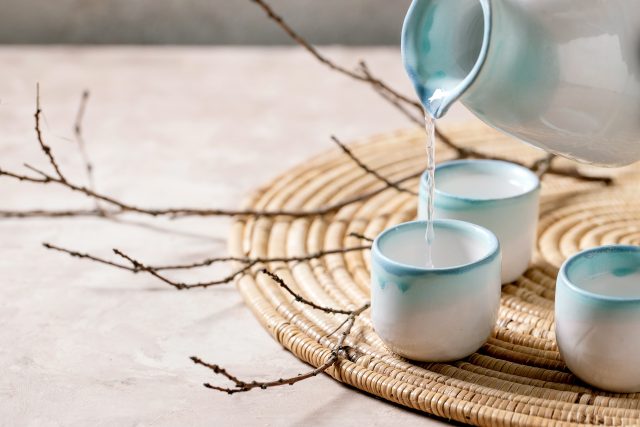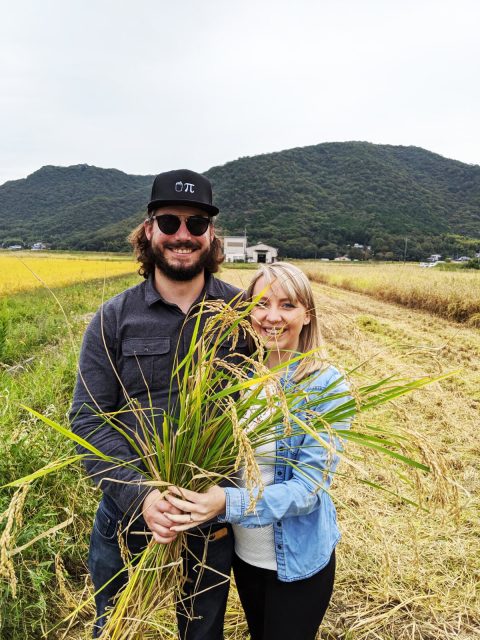How sake is making its mark outside of Japan
With World Sake Day on 1 October there’s no better time to take a look at one of Japan’s most storied beverages, which continues to make an indelible mark on global markets.

The total volume of sake exports from Japan has almost doubled since 2014, rising from 16.3m litres to 29.1m in 2024, having hit a peak of 35.9m litres in 2022, according to trade body the Japanese Sake & Shochu Makers Association.
2024 looks set to be bigger, with total volume exports tracking at 93% higher year-on-year as of July 2024.
Last month UK supermarket Waitrose reported a 241% increase in searches for its sakes, with sakes also listed at Sainsbury’s and Asda, while Berry Bros & Rudd, the UK’s oldest wine merchant, is also selling sake “en primeur”.
Sake is also carving out a niche in the on-trade. On Friday 4 October top Japanese sake producers (and Japan’s wider alcoholic drinks industry) will descend on Marylebone, London, for the inaugural Drink Japan, bringing hundreds of Japanese drinks producers together under one roof. Sake is taking off, so what’s driving the hype?
Rise in Japanese cuisine
“The broader global fascination with Japanese cuisine has created a natural entry point for people to explore sake,” explains Chris Ashton, Drink Japan’s organiser, and former International Wine Challenge, where he was pivotal in developing a Sake awards category.
“Sushi and other Japanese dishes have become mainstream in the UK, consumers are more open to trying sake as part of that experience. There’s also a growing appreciation for craft beverages in general, with more people seeking out artisanal, small-batch, and premium products. Sake fits perfectly into this trend.”
Sake is finding a home at fine dining restaurants, pitched as the perfect pairing not only to Japanese cuisine, but seafood and cheeses too. But a younger generation is also driving its growth, says Natsuki Kikuya, the WSET’s senior sake researcher. “I think it has a place with younger audiences – much the same as the craft beer and low/no cocktail communities – knowing that sake contains no sulfides and has a lower abv than many spirits used in cocktails.”

Broad appeal
It’s not just Japan that’s making sake either, though it is the epicentre of production with 1,000 breweries across the country. You can now find sake breweries in the US, Australia, Thailand and London (Tom and Lucy Wilson opened the UK’s first sake brewery – Kanpai – in Peckham in 2016). And this week there was news of a new sake brewery opening in Bordeaux, called Sake de Bordeaux, founded by Thomas Oda. Further underlining its growing importance in the trade, earlier this year the WSET expanded its sake course, making a third qualification (Level 2) available to its students.
“The response has been incredible from both trade professionals and consumer enthusiasts,” adds Kikuya. “We now have three levels of sake qualification so there is a course for everyone. Our Level 1 Award in Sake is a door opener into the sake category, our Level 2 Award in Sake (launched this year) gives students the skills and knowledge to appreciate sake at a deeper level, and our Level 3 Award in Sake is an advanced level qualification giving students the ability to fully understand and explain the production methods that affect the style, quality and price of sake.”
What is sake?
Partner Content
Sake is brewed by fermenting a type of rice known as sakamai, which differs from regular table rice. There are hundreds of rice varieties used to make sake, but the most common include: Yamada Nishiki, grown largely in Hyogo (Nada district) – Japan’s biggest sake producing region; Gohyakumangoku, common to the Niigata region; and Miyamanishiki, suited to cold climates and common in Nagano Prefecture, but also Akita, Yamagata, Fukushima, Miyagi.
The quality of sake is influenced by the polishing of the rice (removing its husk). More highly polished rice tends to result in more refined, delicate and complex aromas and flavours. Once the rice is polished, exposing the starch inside, the grains are washed, soaked and steamed. Steamed rice is then mixed with koji – a special fungus that helps to convert the rice starches into fermentable sugars. A yeast starter is then added in stages over several days, with fermentation taking 2-4 weeks. The alcoholic liquid is then pressed, filtered and pasteurised.
One of the biggest misconceptions of sake is that it’s strong like a whisky or vodka, when it’s typically around 15% ABV.
“Many people still think of [sake] as something that must be drunk hot and in small, intense quantities,” adds Ashton. “In reality, sake is a brewed beverage more akin to wine in its variety and depth. There are sakes of different styles, some best served chilled, others at room temperature, and the nuances between them are vast.”
Styles and flavours also vary, dependent on rice variety, polishing, production and region. The key styles are Junmai (made with rice polished to 70% and without added alcohol), Honjozo (made with 70% polished rice and a small amount of distilled alcohol), Ginjo (60% with added alcohol) or Daiginjo (50% with added alcohol). Junmai Daiginjo is a sake polished to 50%, but with no added alcohol. There’s also a wider sparkling sake category to complement each style.
Lost in translation?
Futsushu [futsū-shu] – a table sake made with less polished rice – shifts the biggest volumes in Japan, but this isn’t representative of the sake that is growing in popularity beyond Japan.
“Export markets, especially those in the Asia Pacific such as Hong Kong and Singapore, were looking for top-quality sake,” says Arito Mori, executive officer, general manager of International Division at Nihonsakari Co.,Ltd, which owns the 130-year-old Nihonsakari Sake brewery.
“Award-winning, high-end restaurants and bars in those markets were looking for premium junmai daiginjo and ginjo to list on their menus – this is now happening in the UK with sommeliers looking to add new drinks to their wine lists.”

It can be difficult deciphering the different styles, and Nihonsakari is one brewery that’s trying to demystify Sake for western consumers. In 2021 it launched “contemporary” Sake brand, Sakari, which is working to differentiate itself from traditional sake with listings at top London seafood venues including Bentley’s Oyster Bar & Grill, Pearly Queen and Oeno Maris. “We created Sakari for this purpose – to make sake more accessible and interesting,” adds Mori. “We partnered with a design agency in Italy called Sublimio to develop a brand that Western audiences could easily discover and fall in love with.”
Each 720ml bottle in the six-strong range has been designed using Japanese cues with labels printed on Japanese rice paper. Labels include English, rather than Japanese / Chinese characters. It’s also supplemented style descriptors with numbers and colours to simplify preferences, and added an English language back label. “What we are doing with Sakari is simply translating our sake to be easier understood by people from different cultures.”
Related news
Zuccardi Valle de Uco: textured, unique and revolutionary wines




